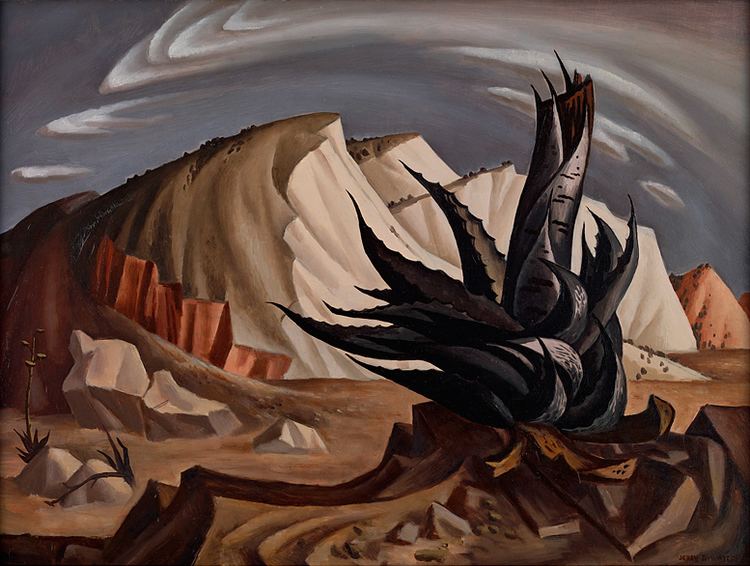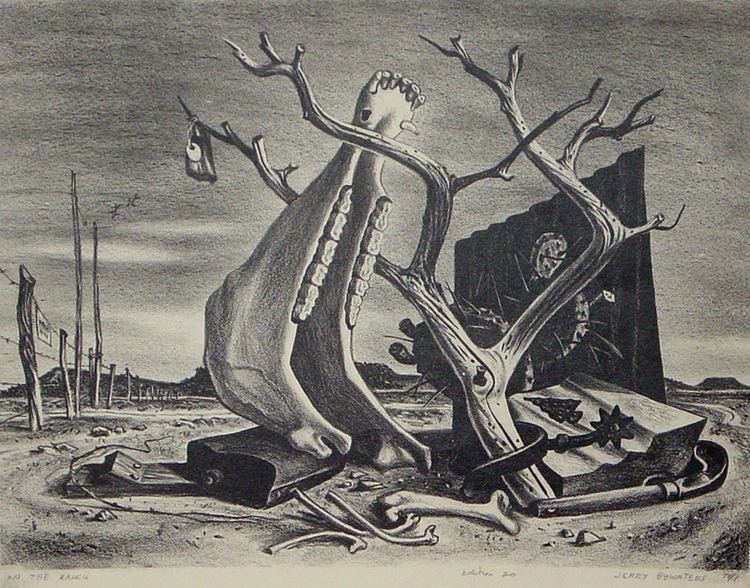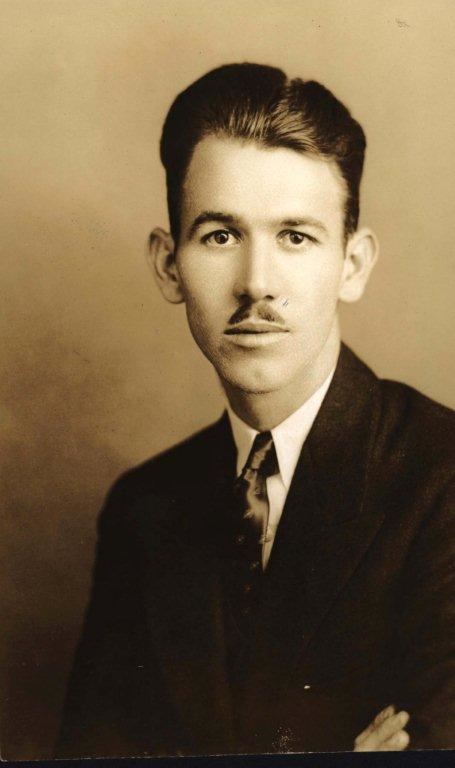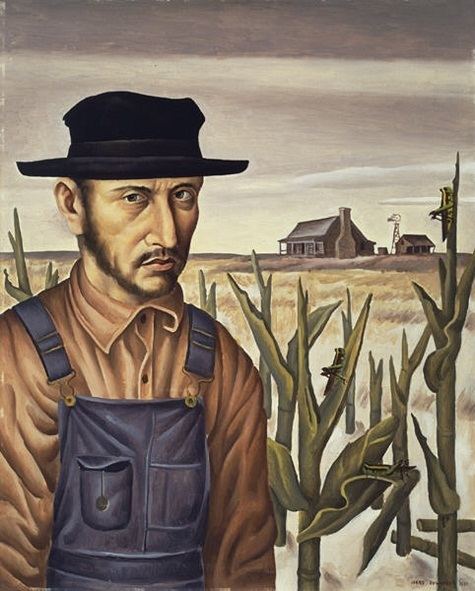Died 1989 | ||
 | ||
Books Jerry Bywaters, Interpreter of the Southwest | ||
Share cropper 1937 by jerry bywaters
Williamson Gerald Bywaters (1906-1989) was an American artist, university professor, museum director, art critic and a historian of the Texas region. Jerry Bywater's career and life's work focused on elevating the quality of Texas art, attracting national recognition to the art of the region and lifting it above provincialism.
Contents
- Share cropper 1937 by jerry bywaters
- Formative Years
- Artist and Printmaker
- University Professor Art Critic and Museum Director
- Legacy
- References

Formative Years

Bywaters was born in Paris, Texas, on May 21, 1906. When a childhood accident kept him out of school for a year Bywaters filled his time drawing. This was his first step toward his life in art. He attended the Terrill Preparatory School for Boys in Dallas, which he credits with helping "me develop as a writer and later critic". His illustrations appeared in the school paper and annual. After graduating Bywaters enrolled in Southern Methodist University and earned a Bachelor of Arts in English and Journalism, and another in General Literature. In his last year he took a painting class from Ralph Rowntree and in July 1927 traveled to Europe with him to study art. The following February he went to Mexico to study the Mexican mural movement and met Diego Rivera. From him he learned that "art, to be significant, must be a reflection of life". In the summer of 1928 he continued his study of art at the Old Lyme Art Colony. There his ability was recognized by noted American painters Bruce Crane and William S. Robinson. It was then that Bywaters decided to pursue art as a profession. He sought to overcome his father's concerns over his career choice, writing to him that he would earn less as a commercial artist in the long run. In the fall he moved to New York to attend the Art Students League. There he studied with John Sloan, who advised him to return to the Southwest where there were "a lot of interesting things" he could paint, convincing Bywaters to return to Dallas.
Artist and Printmaker

Bywaters produced landscapes, still-lifes and portrait paintings, as well as lithographic prints and murals. In 1933 Art Digest recognized Bywaters as an artist of national importance. His paintings in museum collections include On the Ranch (1941) at the Dallas Museum of Fine Arts; Where the Mountain Meets the Plains, at Southern Methodist University; and Oil Field Girls (1940), at the Blanton Museum, University of Texas at Austin.

In 1935 Bywaters began making prints using lithography as a way to make art affordable, hoping the middle class could buy them and popularize Texas regional art. He pioneered the style later termed "Lone Star Regionalism" and he was recognized as "one of the finest of the regional print makers". An early Bywaters lithograph was Gargantua (1935), which won a prize in the 1935 Allied Arts Exhibition. Another, Ranch Hand and Pony (1938), was exhibited at the 1938 Venice Biennial Exposition. Bywaters was a founding member of Lone Star Printmakers, a group of Texas artists who created editions of original prints which they promoted with touring exhibitions from 1938 to 1941.

Bywaters participated in New Deal art programs, winning mural competitions. In collaborations with other Dallas artists he completed six projects in Texas, including a series of panels in collaboration with Alexandre Hogue at the Old City Hall in Dallas; a series of panels at the Paris Public Library; and one mural each in the post offices of Trinity, Quanah, and Farmersville. Other murals were installed at the Parcel Post Building of Houston.
University Professor, Art Critic and Museum Director
Bywaters served for forty years as a faculty member of Southern Methodist University's Division of Fine Arts, where he ran both the Art and Art History departments.
He was the art director of the Dallas Museum of Fine Arts from 1943 to 1964. Unlike his contemporary art directors, Bywaters sought to bring people into the museum, forseeing they were key to survival and growth. For example in 1954 he staged the two week 'Fabulous West' event which attracted 131,000 people. During his tenure as director of the Dallas Museum of Fine Arts, Bywaters produced ambitious exhibitions, notably the 'Religious Art of the Western World' (1958) and 'The Arts of Man' (1962).
When city support for the museum was threatened by accusations that the museum was exhibiting works by communist artists during the Red Scare, Bywaters and the trustees of the Dallas Art Association held fast to the standard of freedom of expression and professionalism.
Bywaters was the art critic for The Dallas Morning News from 1933 to 1939 and wrote hundreds of articles on the art and artists of Texas. He was seen as fair, pointing out merits, and allowing shortcomings to be revealed comparison. As editor of the Southwestern Arts and art critic for the Dallas paper, Bywaters was recognized as the leading spokesman of regionalism in Dallas. He was prominent among the circle of artist known as the 'Dallas Nine', or the 'Lone Star Regionalist'.
Legacy
In 1981, Bywaters gave his numerous papers and clipping on the art and artists of the region to Southern Methodist University, founding the Bywaters Collection on Art of the Southwest. Bywaters lived in Dallas with his wife Mary McLarry Bywaters until his death on March 7, 1989.
